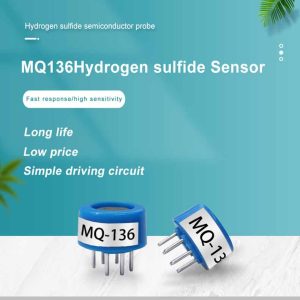Air pollution is a global challenge that affects the health and well-being of both humans and the environment. In recent years, advancements in technology have led to the development of gas sensors that are revolutionizing air quality monitoring. This article explores how gas sensors are transforming the way we monitor and understand air quality, including their benefits, applications, and potential challenges.

Benefits of Gas Sensors in Air Quality Monitoring:
Gas sensors offer several benefits for air quality monitoring. Firstly, they provide real-time and accurate measurements of various pollutants present in the air, such as carbon monoxide (CO), nitrogen dioxide (NO2), ozone (O3), particulate matter (PM), and volatile organic compounds (VOCs). This data allows policymakers, researchers, and individuals to understand the composition and levels of pollutants and take appropriate actions to mitigate their harmful effects. Secondly, gas sensors enable the detection of low concentrations of pollutants, helping identify pollution sources and understand their impact on air quality over time. Lastly, these sensors facilitate citizen science initiatives by empowering individuals to monitor air quality in their surroundings and actively contribute to improving environmental conditions.
Applications of Gas Sensors in Air Quality Monitoring:
Gas sensors have diverse applications in air quality monitoring. They are commonly used in urban areas to establish networks of stationary monitoring stations that continuously measure pollutant levels. These data are then utilized to generate pollution maps, inform public health warnings, and support urban planning decisions. Additionally, gas sensors can be integrated into wearable devices, allowing individuals to monitor their personal exposure to air pollutants and make informed decisions about their daily activities. Gas sensors are also employed in industries to ensure the compliance of emissions with environmental regulations. Furthermore, these sensors play a vital role in indoor air quality monitoring, helping identify potential sources of pollutants and maintaining a healthy living or working environment.
Challenges and Considerations:
Despite their numerous benefits, gas sensors face certain challenges in air quality monitoring. One challenge is the need for calibration and regular maintenance to ensure accurate and reliable measurements. Sensor drift and cross-sensitivity to other gases may require periodic recalibration to maintain accuracy. Additionally, the cost of high-quality sensors can be a barrier to their widespread adoption, especially in developing regions. Furthermore, data validation and quality control are significant considerations to ensure the credibility and reliability of the collected data.
Future Trends and Opportunities:
The future of gas sensors in air quality monitoring looks promising. Technological advancements continue to improve sensor performance, size, and cost-effectiveness. Miniaturized sensors and wireless connectivity enable the development of portable, low-cost monitoring devices that can be easily deployed in various settings. The integration of gas sensors with advanced data analytics and machine learning techniques allows for more comprehensive and precise characterization of air pollution patterns and sources. Moreover, increased public awareness and the demand for real-time air quality information create opportunities for citizen engagement and collaboration in monitoring efforts.
Conclusion:
Gas sensors offer a revolutionary approach to air quality monitoring, providing real-time and accurate measurements of pollutants. Their applications range from stationary monitoring stations in urban areas to wearable devices and indoor air quality assessment. Despite challenges related to calibration, maintenance, and cost, gas sensors continue to evolve, driven by technological advancements and increasing public awareness. With ongoing innovation and collaborative efforts, gas sensors will play a crucial role in understanding, mitigating, and proactively addressing air pollution, contributing to healthier and more sustainable environments for current and future generations.
 : +86 155 8830 2704
: +86 155 8830 2704 : jxdziot@gmail.com
: jxdziot@gmail.com
